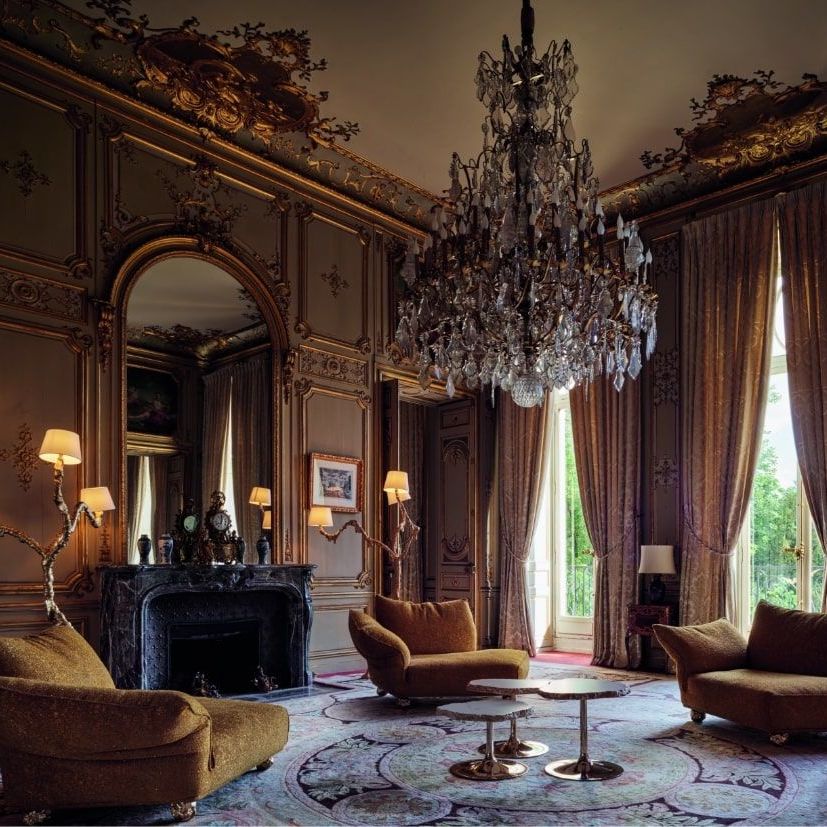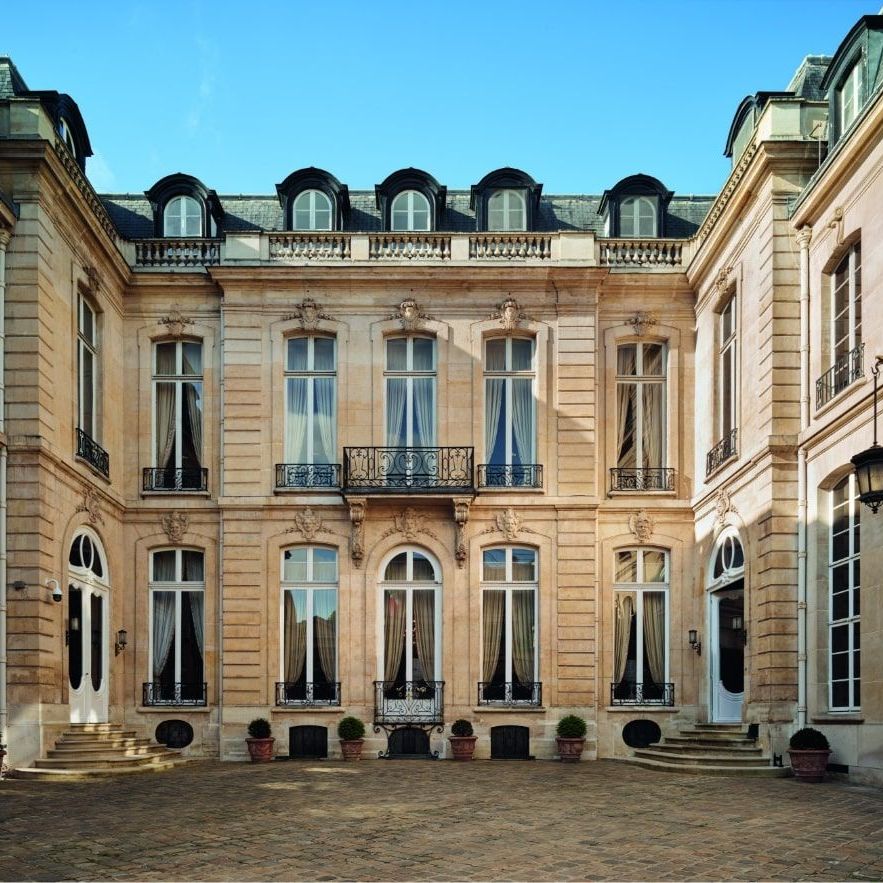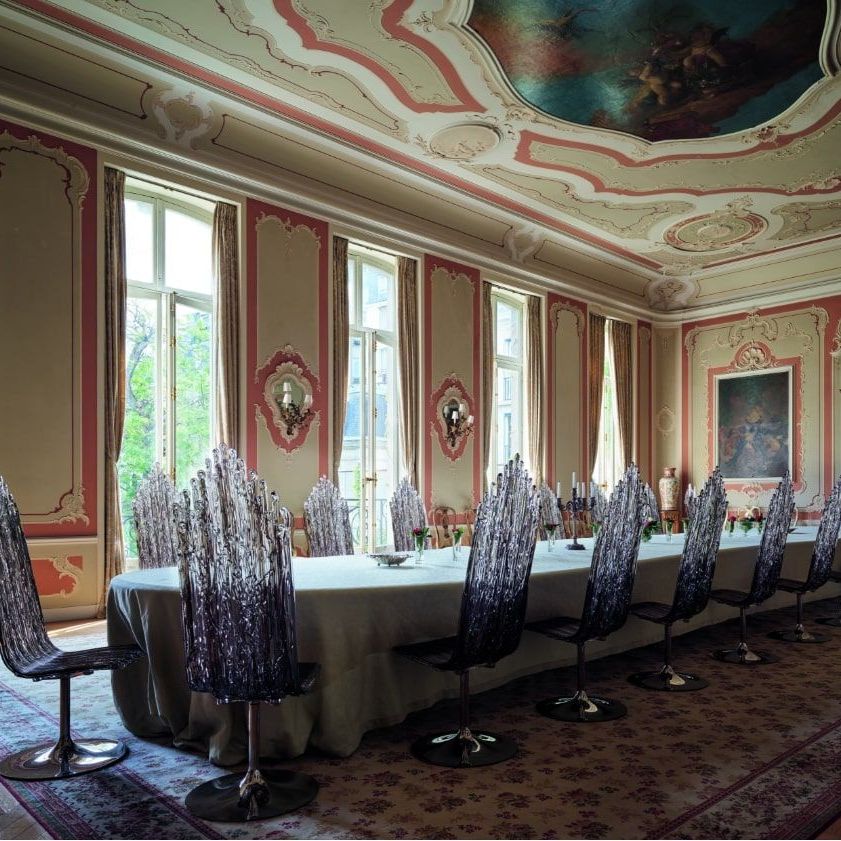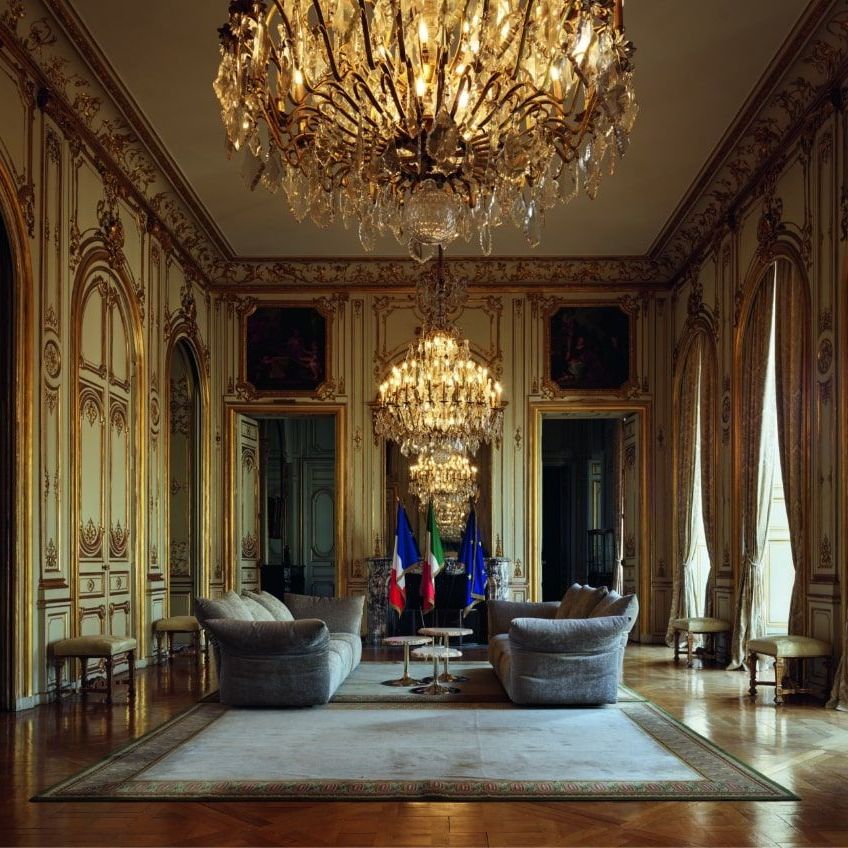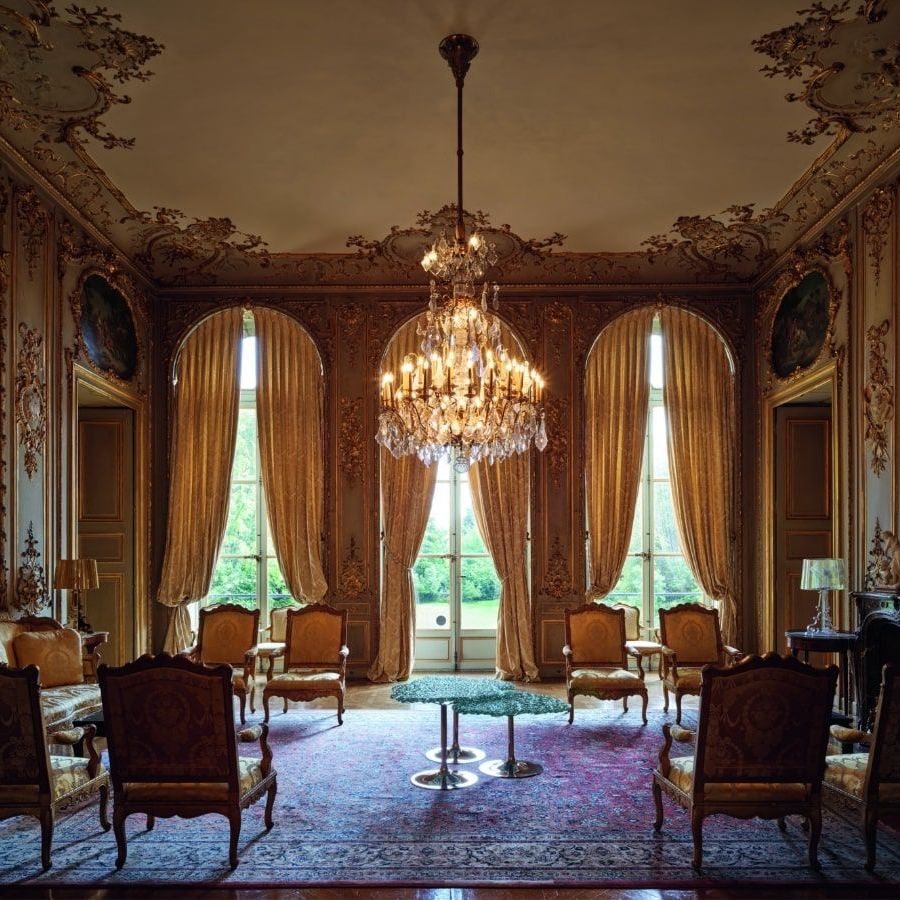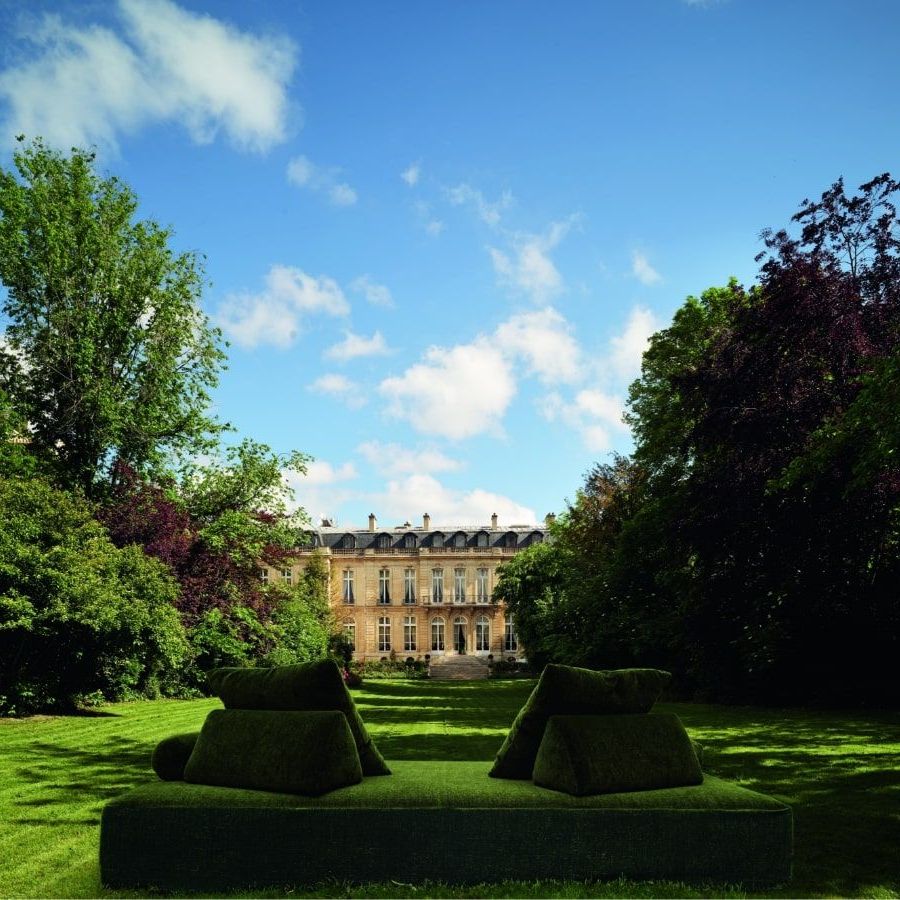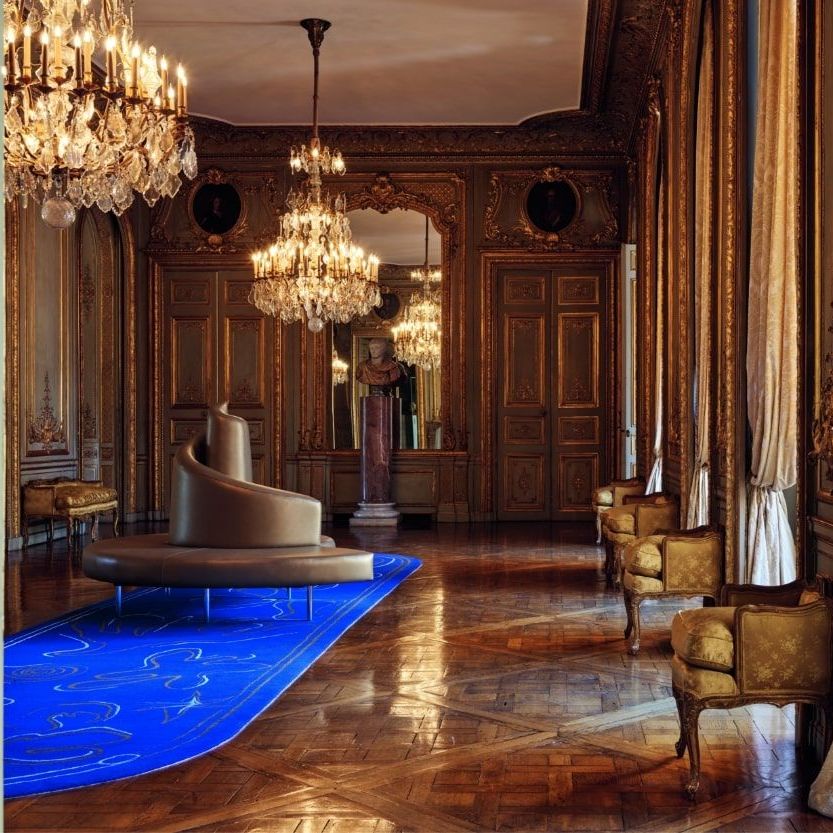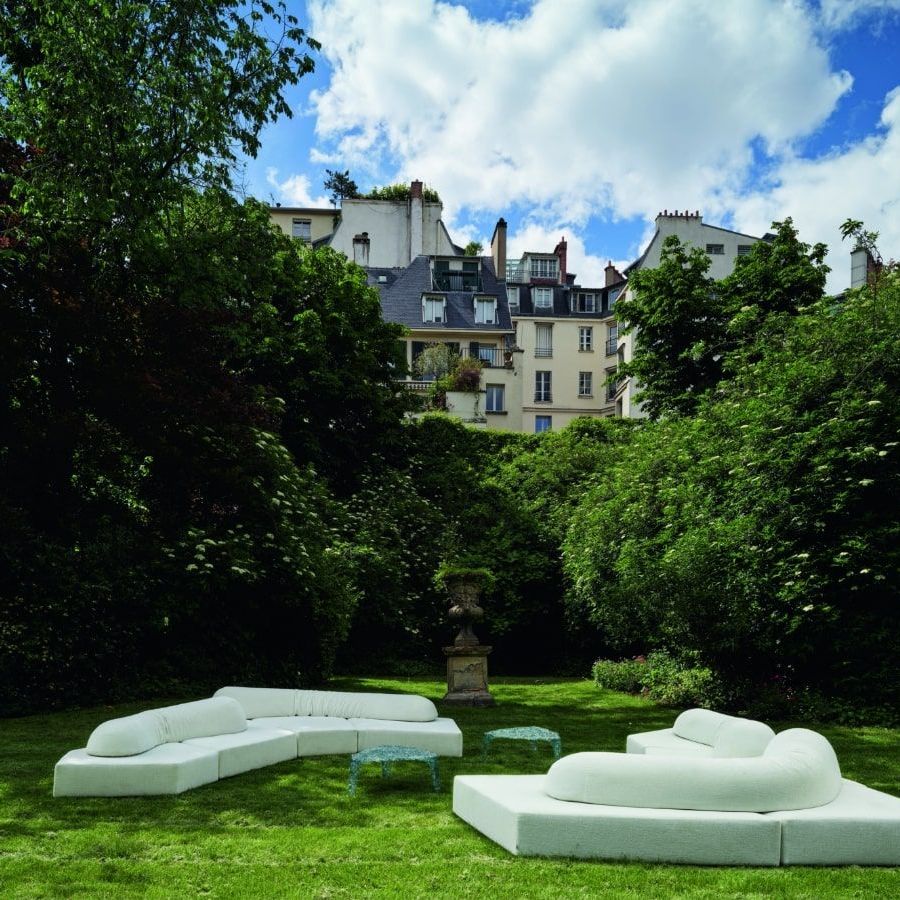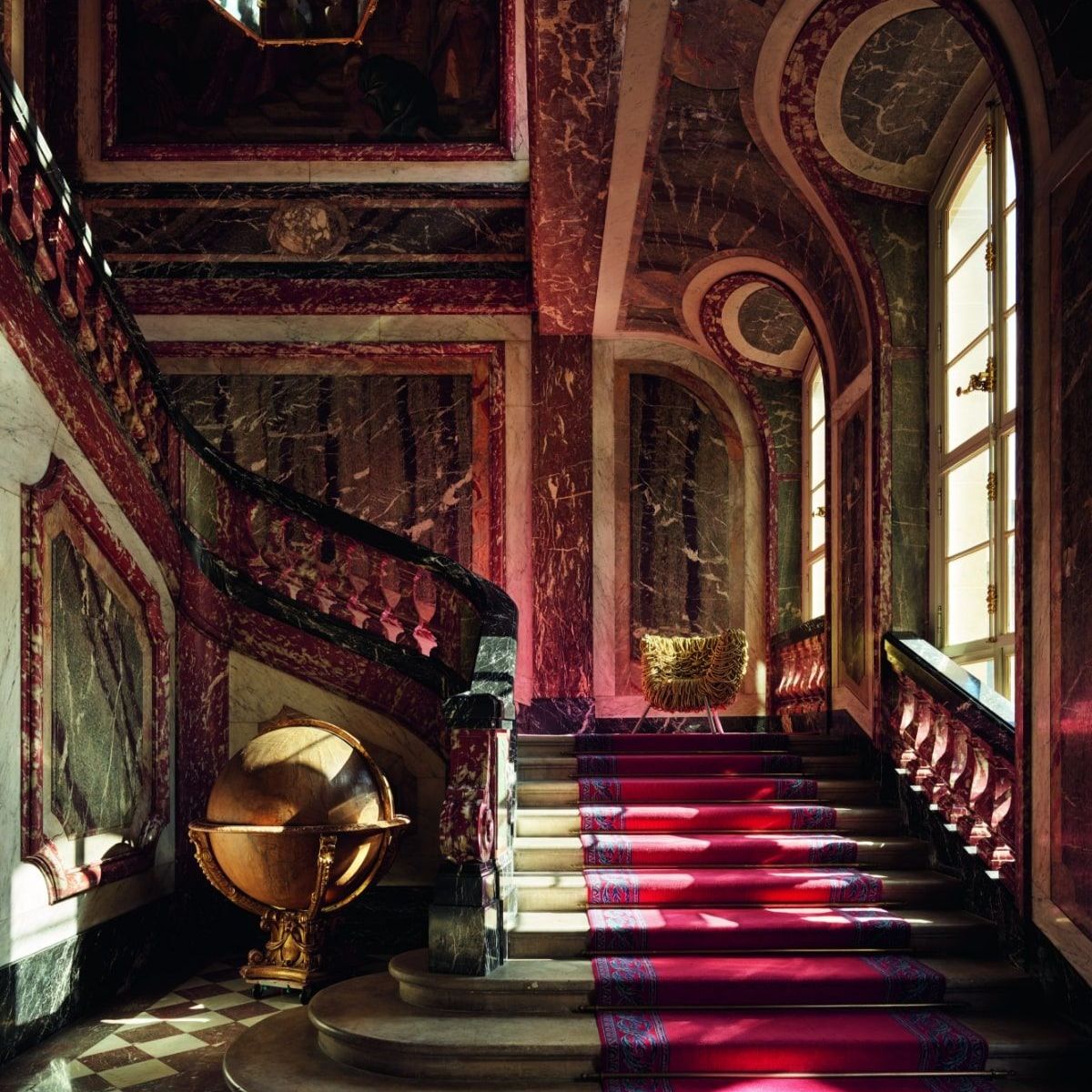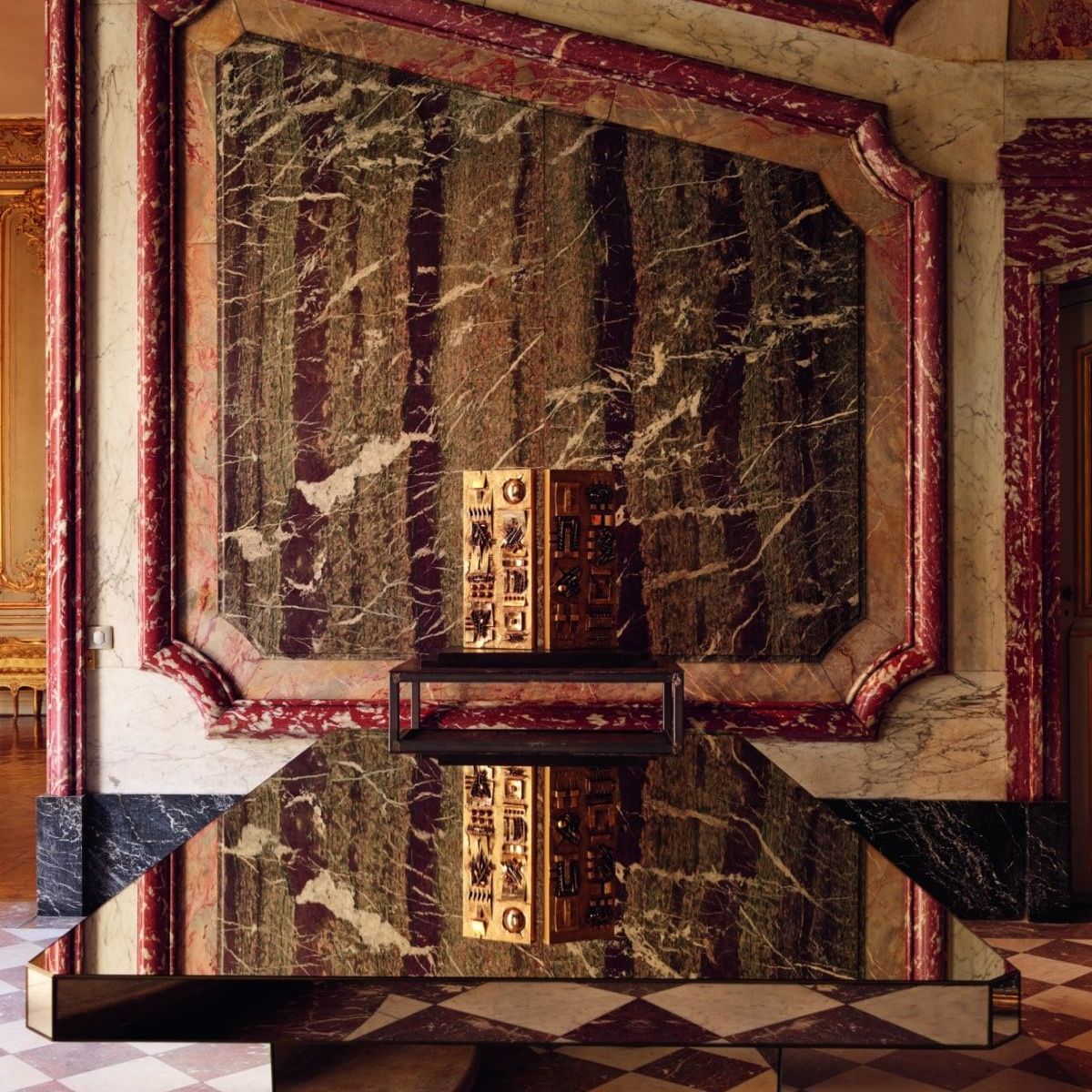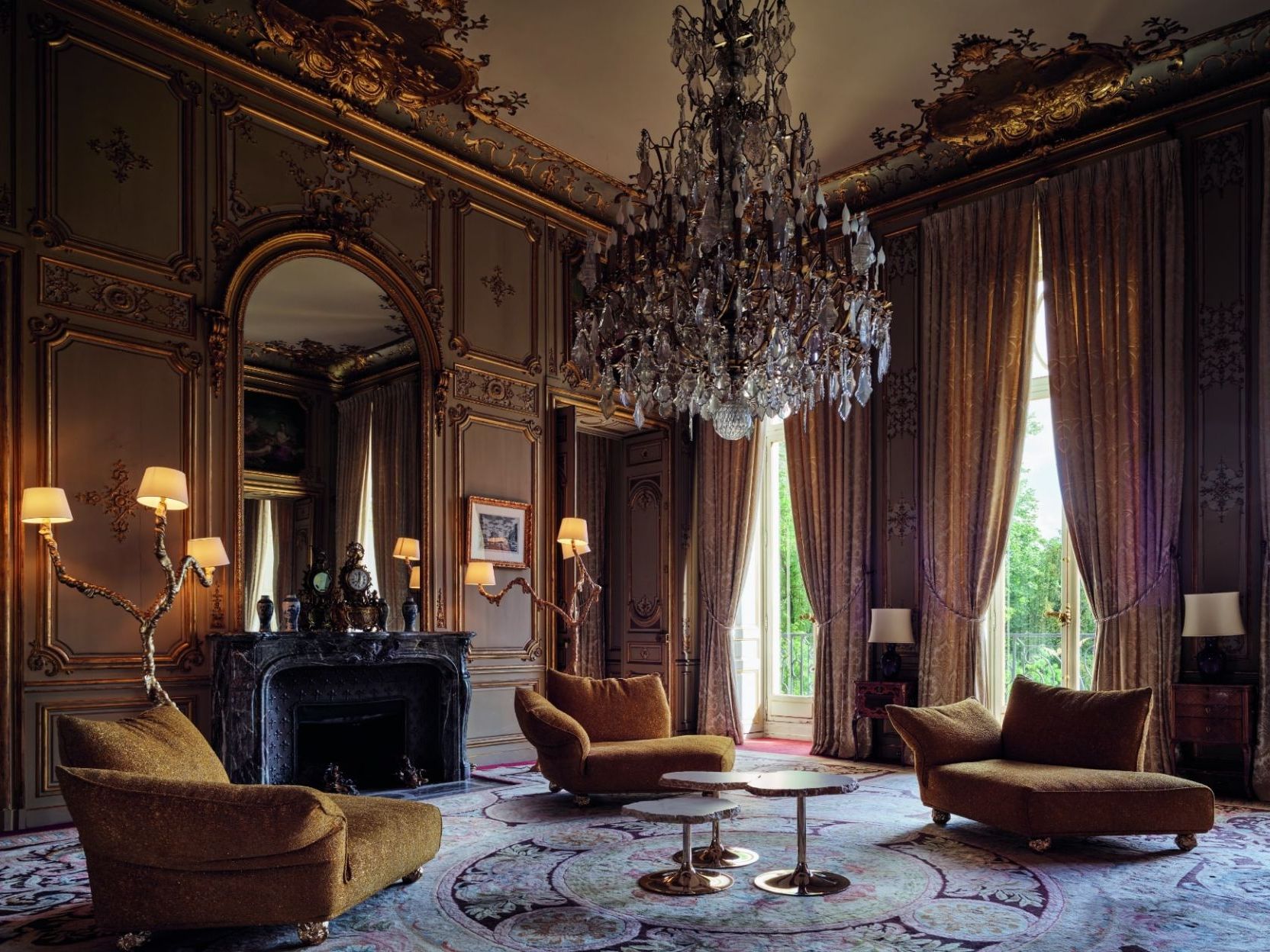
Три дивана-кушетки Standard из коллекции Minerals в цвете Pure Gold с ножками Pepita, алебастровые столики Cicladi и позолоченные светильники Ines стали украшением гостиной Изящных Искусств.
октября 2024
Посольство Италии в Париже
Обилие золота, гобеленов, зеркал и мрамора. Все дышит историческим великолепием и богатством в пространствах комнат, парадных залов и лестниц парижского отеля XVIII века Hôtel de La Rochefoucauld-Doudeauville. Именно здесь с 1937 года располагается резиденция посольства Италии во Франции. 16 мая 2024 года при содействии посла Италии Эмануэлы Д'Алессандро в стенах этого роскошного исторического здания фабрика Edra провела презентацию своей коллекции, утвердив намерение и ответственность выполнять роль проводников ценности неподвластной времени красоты и элегантности, лежащих в основе итальянской культуры. Таким образом Edra наполнила совершенными предметами из своей коллекции еще одно пространство вне времени, — место, которое является воплощением богатых архитектурных традиций Парижа. Подобное сочетание предметов древнего и современного искусства оставляет глубокое эмоциональное впечатление.
«Не смотря на то, что предметы коллекции были помещены в обстановку отеля XVIII века, — говорит посол Д'Алессандро, — кажется, что они были здесь всегда». Действительно, ваш взгляд с удивлением отмечает, насколько естественно и гармонично вписались предметы Edra».
Диван Tatlin от Роберто Семприни и Марио Кананци, выполненный в золотистой коже, занял место в парадной гостиной Globe на ковре авторства Дэниела Роузберри, креативного директора Schiaparelli. Ковер глубокого синего оттенка с белыми и золотыми узорами, один из которых повторяет спиральную форму дивана, другие перекликаются, рифмуются и цитируют друг друга в череде взаимных отсылок.
В гостиной «Четыре континента» под большой люстрой в центре, блистает трио столиков Diamante.
Каждое пространство являет собой новое чудо.
В китайском зале комод Scrigno братьев Кампана эффектно сверкает на фоне стен в отделке желто кремовых оттенков.
Столики Cicladi и золотистые светильники Ines составили вместе прекрасный ансамбль, став деталями атмосферы спокойной утонченности гостиной Изящных искусств, где отделка стен золотистыми молдингами создает оптический эффект зеркальных отражений.
В пространстве террасы с видом на сад, предметы из коллекции A'Mare от Якопо Фоджини, переливаются в свете солнечного света так, словно ожили, создавая иллюзию застывшей воды.
Такая гармоничная интеграция современных предметов интерьера в исторический контекст является частью более масштабного проекта преобразования штаб-квартиры посольства Италии в Париже, чтобы вдохнуть в пространство новую энергию и проиллюстрировать преемственность ценностей, наследия, искусства и красоты.
В пространствах государственных институций это необычайно сложная задача — показать ценность истории и памяти о ней, и в то же время создать такие слияния и пересечения, чтобы показать отношения с современностью.
Такой подход подразумевает четкую стратегию. Речь идет не просто о выборе предметов для обстановки номеров отеля, а о подтверждении значимости итальянской культуры, которая жива как никогда, о том, чтобы продемонстрировать непрерывность плодотворных связей между высокими технологиями, навыками обработки и качественным ремесленным производством.
Подход Made in Italy всегда отличал уникальный характер, неподвластная времени элегантность и внимание к деталям. Итальянский дизайн воспринимается во всем мире как символ совершенства и подлинности, способный воплотить в себе не только красоту, но и традиции, инновации, качество и надежность.
Edra воплощает в жизнь свой культурный проект: она стремится сделать всеобщим достоянием исключительно высокое качество своей коллекции и четко сформулированные ценности. Edra делится красотой во всех проявлениях форм искусства, предлагая уникальный эмоциональный опыт, увлекая ваши чувства и разум в путешествие по самым разным местам и контекстам.
В заключение, в рамках пресс-конференции представители Edra сообщили гостям и журналистам, что некоторые экспонаты ее коллекции останутся в штаб-квартире Посольства, и пользуясь случаем, Edra объявили о своем участии в качестве Официального партнера Casa Italia во время проведения Летних Олимпийских Игр 2024 в Париже.
Здесь же состоялась презентация новой книги Edra Amendola, выпущенной издательством Treccani, в которой выдающийся фотограф Аурелио Амендола чествует коллекцию Edra серией черно-белых фотографий, сделанных с той же тщательностью, которую он проявил, изображая скульптуры Кановы, Бернини и Микеланджело.
Назначение резиденции Посольства Италии в отеле Hôtel de La Rochefoucauld-Doudeauville — стать “хабом” для международного сообщества. Подобные проекты демонстрируют миру, что Италия не живет прошлым, а продолжает быть движущей силой культуры и передового производства.
Штаб-квартиры Посольств становятся не просто местами размещения дипломатических представительств, а центрами для международного диалога и реального продвижения культуры. Благодаря подобным инициативам роль штаб-квартиры Посольства как связующего звена между странами укрепляется, поскольку она отстаивает динамичный и инновационный образ Италии, поощряя культурное и художественное сотрудничество на глобальном уровне.
 |
Сильвана Анниккьярико Архитектор из Милана, работает как исследователь, критик и преподаватель. Консультирует государственные структуры и частные компании. В выставках и публикациях затрагивает темы современности, ислледует работы великих мастеров и новые имена в сфере дизайна. С 2007 по 2018 год возглавляла Музей дизайна Триеннале в Милане. |





